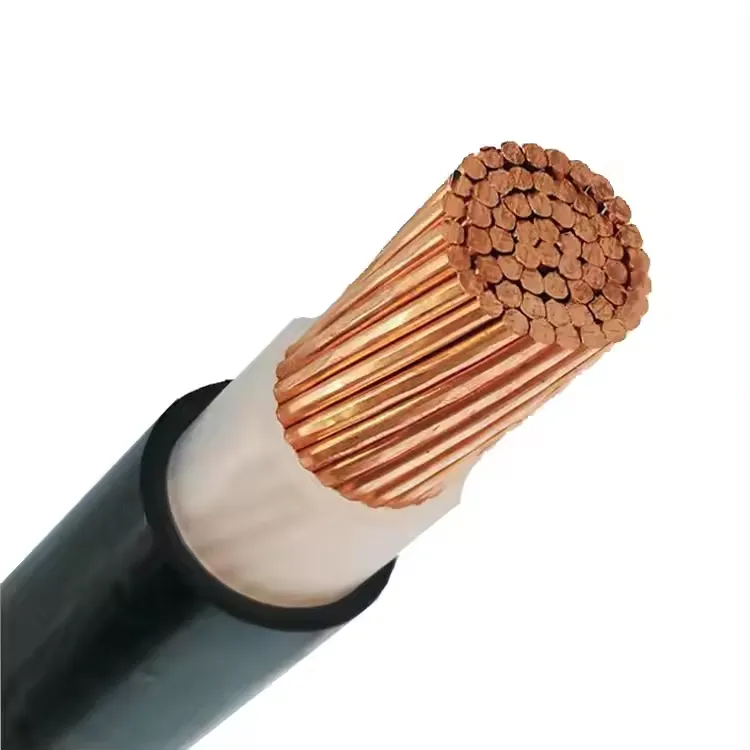Time: 2025-06-03 14:30:38 Source: Henan Province Jianyun Cable Co., Ltd.
Choosing between copper and aluminum conductors for power cables involves balancing multiple factors such as electrical performance, material cost, weight, mechanical durability, thermal behavior, and environmental impact. Copper offers superior conductivity and tensile strength, making it ideal for high-demand, space-constrained, and long-term installations. Aluminum, on the other hand, provides significant cost and weight advantages, especially in large-scale or overhead applications where lighter conductors reduce structural requirements. However, aluminum’s higher resistivity, susceptibility to oxidation, and lower mechanical robustness necessitate design adjustments—such as larger cross-sections and specialized termination methods—to ensure reliability. This article explores the key comparative benefits and drawbacks of copper versus aluminum power cables to guide informed material selection for electrical projects.

Copper has a higher electrical conductivity, approximately 60% greater than aluminum, which means copper conductors can carry more current in a smaller cross-sectional area. In practical terms, an aluminum conductor requires about 1.6 times the cross-sectional area of copper to carry the same amperage, resulting in larger cable diameters and insulation requirements for aluminum.
The higher resistivity of aluminum leads to greater voltage drop over long runs, so engineers often upsize aluminum conductors to compensate, which can offset some cost savings. Copper’s lower resistive losses translate into improved energy efficiency for critical systems such as data centers, industrial motors, and high-voltage transmission, where maintaining voltage levels is paramount.
Aluminum is significantly less expensive per pound than copper—often 3 to 4 times cheaper—making it an attractive choice for budget-conscious projects, particularly when large conductor sizes are required. Although aluminum requires larger conductors, the material savings frequently outweigh the extra costs associated with insulation and connectors, resulting in a lower overall installed cost.
Aluminum has a density about one-third that of copper, so an aluminum conductors weigh roughly 2.5 times less than an equivalent copper conductor of the same conductivity. This reduced weight simplifies transport, handling, and support structure requirements—beneficial for long overhead lines, rooftop installations, and aerospace or vehicle wiring where every kilogram matters.
Copper exhibits higher tensile strength—about 7% to 28% greater than aluminum—providing better resistance to mechanical stress, bending, and fatigue under repeated flexing. Aluminum, while lighter, is more prone to cracking and deformation when subjected to vibration or repeated movement, making copper preferable for environments with motion or mechanical load.
Aluminum’s higher coefficient of thermal expansion causes it to expand and contract more with temperature changes, which can loosen terminations over time if not properly managed. Proper installation of aluminum cables requires antioxidant compounds, specialized connectors (e.g., CO/ALR lugs), and periodic maintenance to prevent oxidation-induced resistance increases and potential overheating. Copper terminations are generally more straightforward, requiring standard cramps or lugs without additional compounds, thus reducing labor time and long-term maintenance concerns.
Copper’s superior thermal conductivity allows for more efficient heat dissipation, enabling higher ampacity in the same ambient conditions compared to aluminum. Aluminum’s lower thermal conductivity and higher resistive losses result in greater heat buildup, which necessitates derating factors in conduit or bundled installations.
Aluminum expands and contracts nearly twice as much as copper for a given temperature change, requiring careful consideration in long runs or terminations to avoid loosening connections. Copper’s more stable dimensional characteristics under temperature variation translate to more consistent electrical and mechanical performance in fluctuating environments.
Aluminum readily forms an oxide layer when exposed to air, which increases contact resistance at joints unless properly treated with sealants or conductive greases. Copper’s oxide layer is conductive enough to maintain good electrical contact, so copper terminations remain reliable without special compounds, reducing the risk of hot spots at connections.
With correct installation practices, aluminum cables can achieve reliable service; however, periodic inspections and maintenance (retorquing connections, reapplying antioxidant compounds) are essential. Copper cables generally require less maintenance over their lifespan and exhibit fewer connection-related failures, making them well-suited for critical infrastructure where reliability is paramount.
Producing primary aluminum is energy-intensive, consuming significantly more electricity than copper smelting; however, recycled aluminum requires approximately 95% less energy, reducing its overall environmental footprint when recycled. Copper production also has a high energy cost and environmental impact, but copper’s high recyclability (recovering up to 90% of its energy content) ensures that reclaimed copper is an eco-friendly conductor choice.
Both metals are highly recyclable; aluminum’s lower weight and efficient recycling process often yield lower transportation emissions for scrap collection. Copper’s robust market value encourages widespread recycling, but its heavier weight can increase collection and processing logistics costs compared to aluminum.
Use Copper When: High power density, space constraints, and critical reliability are required, such as in data centers, medical facilities, industrial motor drives, and commercial building distribution panels. Copper’s superior conductivity, mechanical strength, and minimal maintenance needs justify its higher material cost in these scenarios.
Use Aluminum When: Cost and weight savings are prioritized, and there is sufficient space or support structure capacity for larger conductors, such as overhead transmission lines, long feeder runs, communication towers, and vehicle or aerospace wiring. Aluminum’s lower material cost and lighter weight can yield substantial savings in large-scale installations, though designers must account for larger cross-sections and specialized termination practices.
Hybrid solutions, such as copper-clad aluminum conductors, combine aluminum’s weight advantage with a copper surface for improved conductivity and termination properties, but these are niche solutions rather than mainstream choices.
The choice between copper and aluminum conductors ultimately depends on project-specific priorities: electrical efficiency, mechanical demands, installation logistics, lifecycle costs, and environmental considerations. Copper excels where performance, durability, and minimal maintenance are critical, while aluminum is advantageous for large-scale, weight-sensitive, and cost-driven applications. By understanding the trade-offs in conductivity, cost, weight, mechanical behavior, and environmental impact, engineers and project managers can select the optimal conductor material to meet performance requirements and budget constraints.